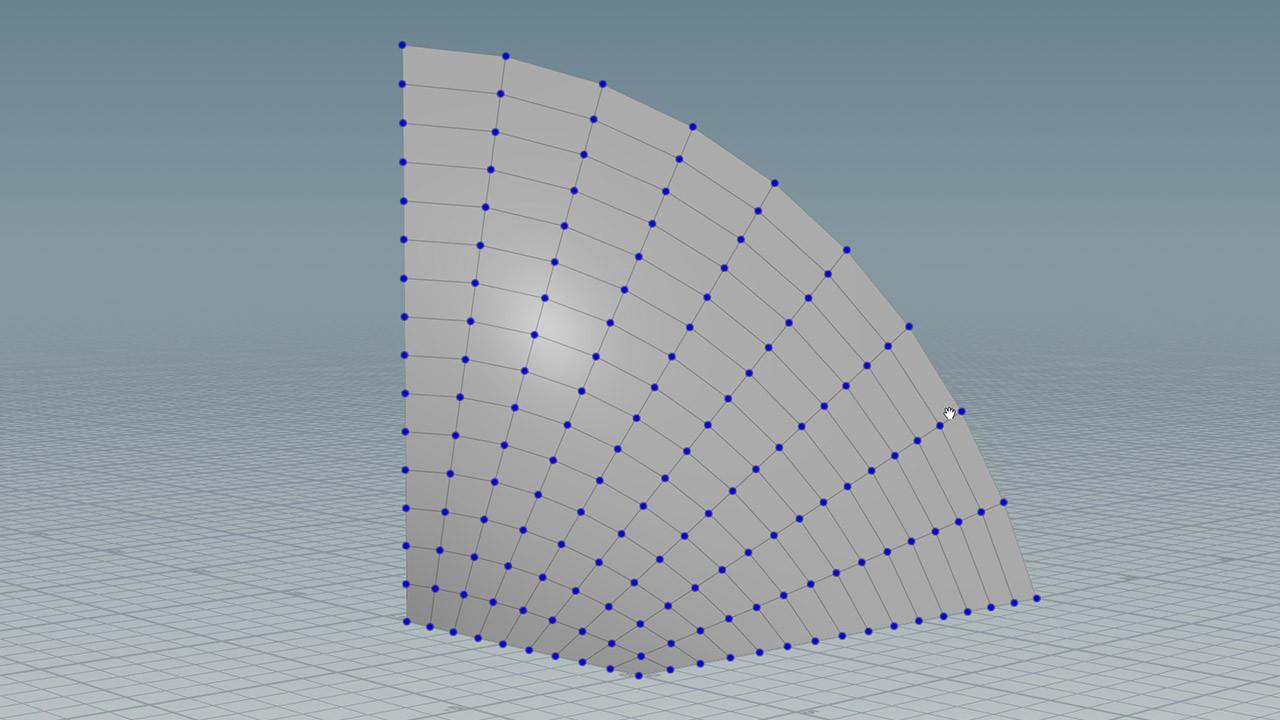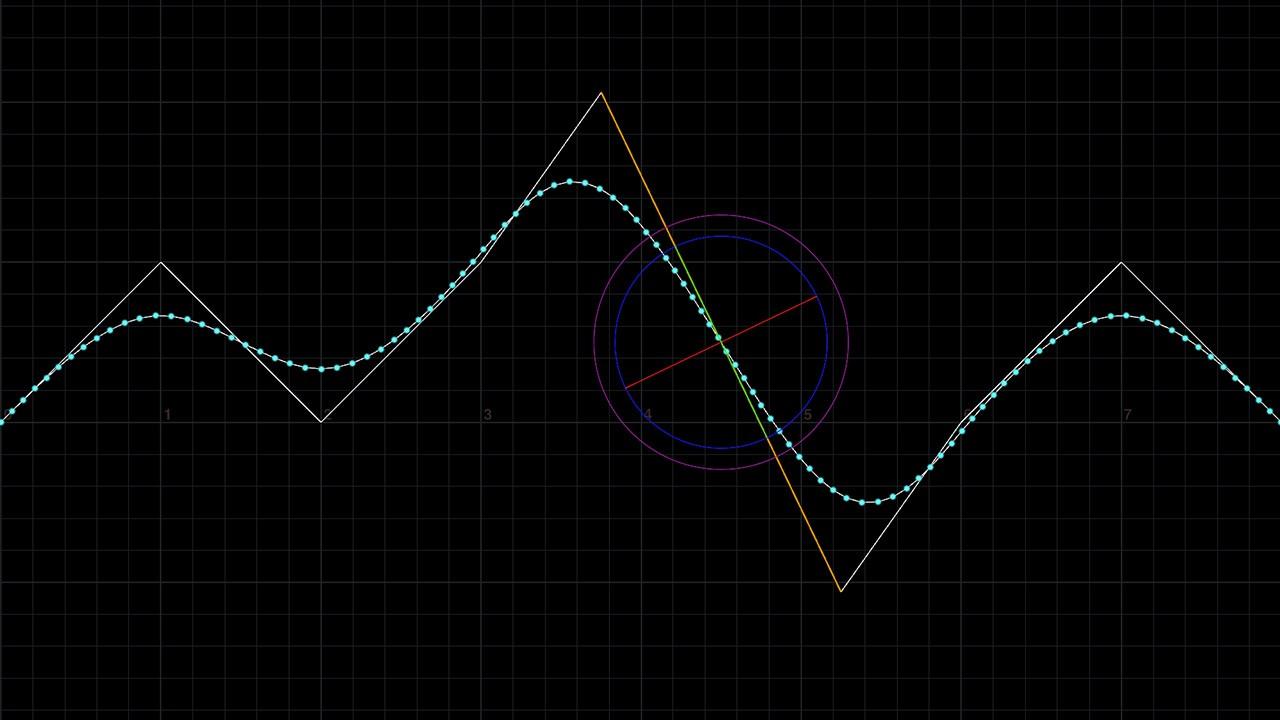What You’ll Learn
Houdini’s unique approach to geometry underpins everything you’ll end up doing with it – VFX, direct modelling, procedural modelling, UVs, scene layout – it all starts here. This course is where we begin laying the best foundations for everything ahead.
By the end of this course, you’ll have a deep understanding of:
- Houdini’s geometry components – points, vertices, primitives, edges and breakpoints
- How geometry is constructed in Houdini by connecting points
- The importance and power of vertices in controlling connectivity
- The concepts, theories and practical uses of Houdini’s primitive types – polygons, nurbs, beziers, meshes, polysoups and quadratic primitives
- How to easily convert from one primitive type to another – plus when and why you’d want to
Houdini 19 updates are on the way!
Houdini’s just had an update, and you’re getting one too. Houdini 19 introduces a brand new curve node that makes working with beziers a hell of a lot easier, so we’re updating the bezier and nurbs sections of this course to make sure you have the latest information.
If you grab the course now, you’ll get these updates for free the second we release them. And don’t worry, if you’re sticking with older versions of Houdini, you’ll keep the original course material, too.
Course Syllabus
Let’s talk details
Section 01
Creating Primitive Objects
There are different ways you can add primitive objects – at the object or geometry level. We’ll explain what that means, and show you how. Then we’ll get a hold of Houdini’s viewport handles, to tackle positioning and sizing and how to use these in combination with a few need-to-know keyboard shortcuts.

Lessons
1. Creating primitive geometry - create at object level vs create in context
2. Using viewport handles to create and size primitive objects
2 Tutorials 5 Minutes
Section 02
Geometry Components
As soon as you look at Houdini’s geometry components, you realise it’s different to other applications. Points as well as vertices? What exactly are primitives and why are there so many different types? A geometry point is the same thing as a particle? Don’t worry, we’ll walk you through it.

Lessons
1. Geometry Components Part 01 - Points, Edges, and Primitives
2. Geometry Components Part 02 - Vertices
3. Component Numbers
3 Tutorials 23 Minutes
Section 03
Connecting Points
Building geometry in Houdini is all about connecting points – and vertices are the boss. But you’re the CEO (in this metaphorical company analogy), so you need to know how to get those vertices to work for you. Understanding vertices opens up a whole new world of creative flexibility, only possible in Houdini.

Lessons
1. Connecting Points - Curves
2. Disconnecting and Reconnecting Points
3. Vertices Control Connectivity
4. Connecting Points - Particles to Surfaces
5 Tutorials 30 Minutes
Section 04
Primitive Types - Polygons
Just like in other applications, but different. You see, polygons in Houdini are curves at the same time as they are surfaces. What? You heard us. Working with open and closed polygons (and converting between them) is really powerful and incredibly versatile. We’ll show you how.
Houdini 19 update coming soon!

Lessons
1. Closed Curves are also Polygon Surfaces
2. Every Polygon Face is also a Closed Curve
3. Open and Closed Polygons - Unrolling Primitives
4. Open and Closed Primitives Part 02 - Rendering Curves
5. Polygons - Polymodelling tools on polygon curves
6. Polygon options on Primitive objects
6 Tutorials 40 Minutes
Section 05
Primitive Types - Nurbs and Beziers
What’s parameterisation? Aside from a difficult word to say quickly. In this section we’re getting down and dirty with parametric curves and surfaces. Many people think it’s all about polygons these days, but understanding this stuff comes in real handy – especially once you get into procedural modelling.
Houdini 19 update coming soon!

Lessons
1. Nurbs Curves - Components
2. Nurbs Curves - Order
3. Nurbs Curves - Point Weight
4. Breakpoints and Converting Polygon Curves to Nurbs Curves
5. Parametric space
6. Parameterisation Part 01 - Uniform vs Chord Length
7. Parameterisation Part 02 - Chord Length and Centripetal
8. Bezier Curves Part 01 - Control Vertices
9. Bezier Curves Part 02 - Breakpoints
10. Nurbs and Bezier Surfaces - Cross Section Curves
11. Nurbs & Bezier Surfaces - Parametric Space
12. Nurbs & Bezier Surfaces - Patches. The Limitations of Nurbs and Bezier Surfaces
13 Tutorials 1 Hour 10 Minutes
Section 06
Comparing & Converting Nurbs & Polygons
What do you get if you convert a polygon mesh to a nurbs surface? No it’s not a set up for a bad joke, it’s an important question and one we’re going to answer. While we’re at it, let’s talk about Houdini’s unique ability to subdivide and interpolate polygon curves and how it suddenly makes them as flexible as nurbs curves.

Lessons
1. Comparing Nurbs and Bezier Curves to Polygon Curves
2. Using Polygon Curves Like Nurbs Curves - Subdivision & Interpolating Curves
3. Converting Polygon Faces to Nurbs Surfaces
4. Bilinear Mesh
4 Tutorials 27 Minutes
Section 07
Primitive Types – Polysoups & Quadratic Primitives
These guys save lives. Well, not quite – but they do save memory and disk space in wildly different ways. One day to deadline, but your scene is so heavy you can barely move? Building a friendship with these fellas could set you free.

Lessons
1. Bilinear Mesh
2. Polysoup
3. Quadratic Primitives
3 Tutorials 24 Minutes
Our Students Say It Best

"I am not even exaggerating but you sir are the best teacher I have encountered, ever! You have a way of simplifying the complexities of Houdini in a way that no one is doing and for that kudos. Clearly you understand Houdini inside out plus you have a beautiful voice and accent! The course is enjoyable as much as it is educating."
David Kibui
Creative Director, Visign Creative and Marketing

The Geometry Essentials
Key Principles & Concepts Bundle
$229.97 $179.99
Save 20% by bundling three courses

The Geometry Essentials
Complete Collection Bundle
$429.94 $299.99
Save 30% by bundling six courses
Need Hipflask for an entire team, studio or classroom?
When You've Finished
Where to next?
Geometry Essentials 02
Attributes: Principles, Normals & Vectors
Attributes are the blood that flows through Houdini’s veins, carrying data through a geometry network and passing data from one piece of geometry to another. They’re incredibly powerful – they drive particle simulations, carry material information, and allow for all kinds of custom functionality. Attributes allow us to actually see, read and manipulate the raw data that defines our models and effects…
View Course
Be the first to get new courses
New course updates straight to your inbox, along with special offers and discounts!

Geometry Essentials 01+02+03
The Key Principles & Concepts Bundle
$229.97 $179.99
Save 20% by bundling three courses

Geometry Essentials
01+02+03+04+05+06+07+08
The Complete Collection Bundle
$429.94 $299.99
Save 30% by bundling eight courses
Need Hipflask for an entire team, studio or classroom?

Geometry Essentials 01+02+03
The Key Principles & Concepts Bundle
$229.97 $179.99
Save 20% by bundling three courses

Geometry Essentials
01+02+03+04+05+06+07+08
The Complete Collection Bundle
$429.94 $299.99
Save 30% by bundling eight courses











